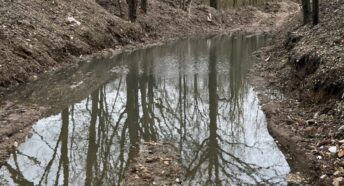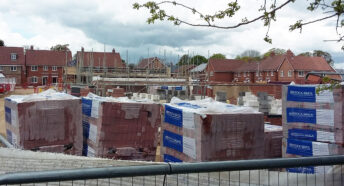Research is great...
The levels of unprotected countryside in the South East of England. In Kent we have 39% of our countryside which is unprotected by any specific designation. This could be in danger in the future.
Quite often CPRE Protect Kent does research in order to show how inappropriate certain developments are, or to make a point to decision makers. We recently used an excellent piece of research to help supplement our response to Gravesham Borough Councils planning strategy, and we think it may have been a significant reason for them changing their minds.
Our national office also spends a lot of time working on research, and they recently released an absolutely fascinating document which will hopefully begin to change our policymaker’s ideas about the National Planning Policy Framework (NPPF).
One of our biggest problems with the draft NPPF was that although the Government appeared committed to protecting designated landscapes, they had completely omitted to mention the protection of undesignated landscapes. When you consider that the total English countryside area is 46,861 miles squared, of which 26,153 miles squared is unprotected countryside, you may begin to appreciate our concern. This is roughly half of all of our countryside which could be put at much greater risk because of the NPPF. This would be a real shame as planning policy has recognised the intrinsic value of our ‘ordinary’, undesignated countryside for many, many years. Our undesignated countryside is still special, and it still requires protection from urban sprawl and unrestricted development and the NPPF as it stood in its draft form was simply insufficient at protecting it.
So, what does this ‘ordinary’ countryside look like? The picture below is a landscape that would be freed up for development with little protection if the NPPF were to go through unchanged. I think that you’ll agree with me when I say; it’s worth fighting to save!
Within Kent we have two large chunks of our countryside which are largely undesignated and could therefore be open to more development. The majority of the Romney Marshes have no special designation, as well as north of the North Downs and South of Maidstone. The marshes are an iconic, tranquil and beautiful landscape that must remain protected by Government policy so let us hope that when the NPPF is next released we see some drastic changes.
- A number of important documents have yet to emerge. For example, a rigorous transport plan and a finalised air-quality assessment. The latter is critical given that allocations at Teynham will feed extra traffic into AQMAs.
- There seems to be no coherent plan for infrastructure delivery – a key component of the plan given the allocations being proposed near the already crowded Junction 7.
- There seems to have been little or no cooperation with neighbouring boroughs or even parish councils within Swale itself.
The removal of a second consultation might have been understandable if this final version of the plan were similar to that being talked about at the beginning of the consultation process. It is, however, radically different in the following ways:
- There has been a major shift in the balance of housing allocations, away from the west of the borough over to the east, especially around the historic town of Faversham. This is a move that raises many concerns.
- A new large allocation, with accompanying A2 bypass, has appeared around Teynham and Lynsted, to which we are objecting.
- Housing allocations in the AONB around Neames Forstal that were judged “unsuitable” by the council’s own officers have now appeared as part of the housing numbers.
- Most of the housing allocations being proposed are on greenfield sites, many of them on Grade 1 agricultural land – a point to which we are strongly objecting.
Concerns about the rush to submit the plan
The haste with which the plan is being prepared is especially worrying given the concentration of housing in Faversham. If the town is to take a large amount of new housing, it is imperative that the policies concerning the area are carefully worked out to preserve, as far as possible, the unique nature of the town. The rush to submit the plan is likely to prove detrimental.
As Swale does not have a five-year land housing supply, it is open to speculative development proposals, many of which would run counter to the ideas contained in the current plan. Some are already appearing. This is a common situation, and one that, doubtless, is a reason behind Swale’s haste.
Our overriding fear, however, is that this emphasis on haste is ultimately going to prove counterproductive. This is because it is our view that the plan, in its current form, is unlikely to pass independent examination. We are urging Swale to listen to and act upon the comments being made about the plan and to return the plan to the council with appropriate modifications before submitting it to the Secretary of State.
Essentially, this means treating the current consultation not as the final one but as the ‘lost’ second consultation.
The consultation ends on Friday 30 April and we strongly urge residents to make their opinions known if they have not already done so.
Further information









